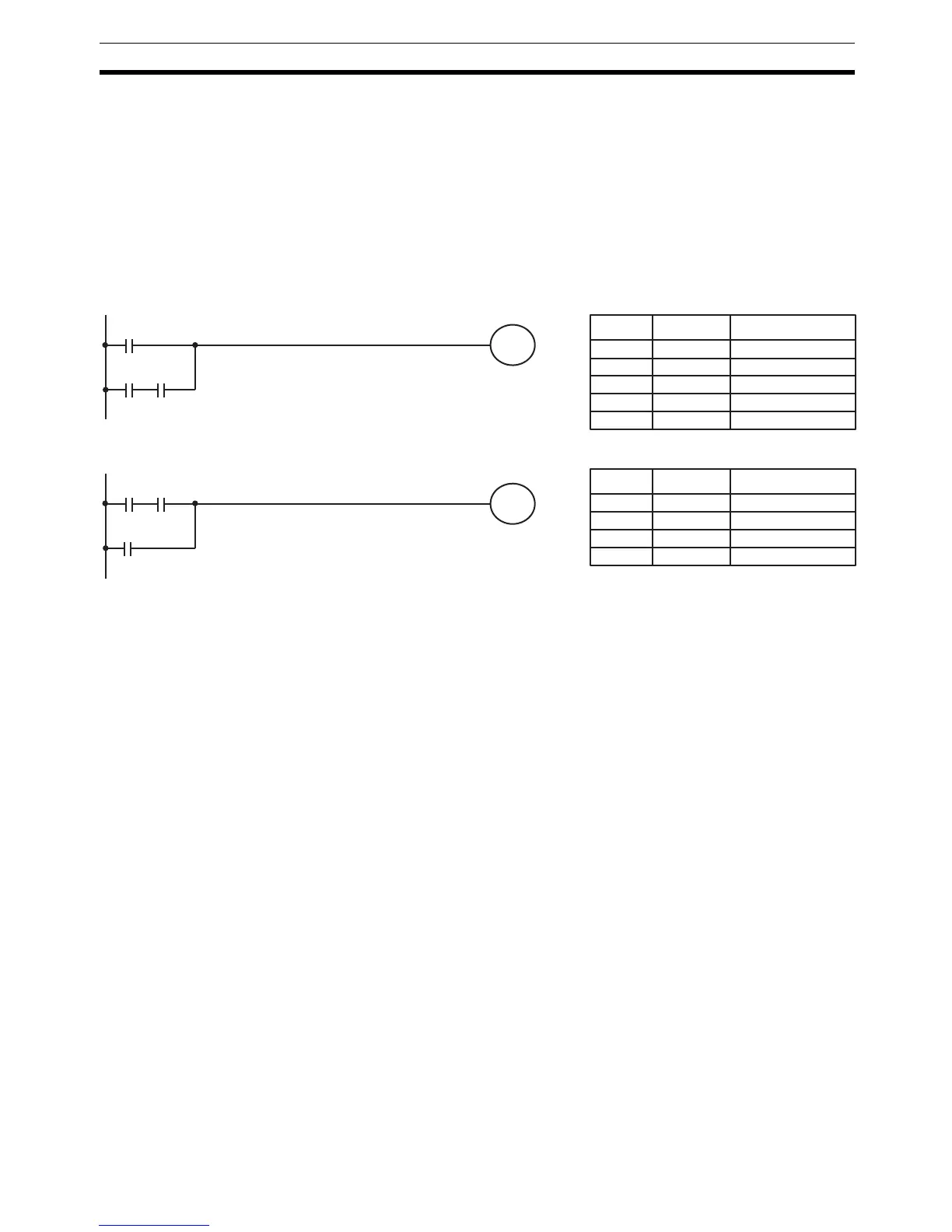205
Program Execution Section 4-7
There are a few exceptions to this rule, including the INTERLOCK CLEAR,
JUMP END, and step instructions. Each of these instructions is used as the
second of a pair of instructions and is controlled by the execution condition of
the first of the pair. Conditions should not be placed on the instruction lines
leading to these instructions. Refer to SECTION 5 Instruction Set for details.
When drawing ladder diagrams, it is important to keep in mind the number of
instructions that will be required to input it. In diagram A, below, an OR LOAD
instruction will be required to combine the top and bottom instruction lines.
This can be avoided by redrawing as shown in diagram B so that no AND
LOAD or OR LOAD instructions are required. Refer to 5-8-2 AND LOAD and
OR LOAD for more details.
4-7 Program Execution
When program execution is started, the CPU Unit scans the program from top
to bottom, checking all conditions and executing all instructions accordingly as
it moves down the bus bar. It is important that instructions be placed in the
proper order so that, for example, the desired data is moved to a word before
that word is used as the operand for an instruction. Remember that an instruc-
tion line is completed to the terminal instruction at the right before executing
an instruction lines branching from the first instruction line to other terminal
instructions at the right.
Program execution is only one of the tasks carried out by the CPU Unit as part
of the cycle time. Refer to SECTION 7 CPU Unit Operation and Processing
Time for details.
00000
00001 10007
10007
00001
00000
10007
10007
Diagram A
Diagram B
Address Instruction Operands
00000 LD 00000
00001 LD 00001
00002 AND 10007
00003 OR LD ---
00004 OUT 10007
Address Instruction Operands
00000 LD 00001
00001 AND 10007
00002 OR 00000
00003 OUT 10007

